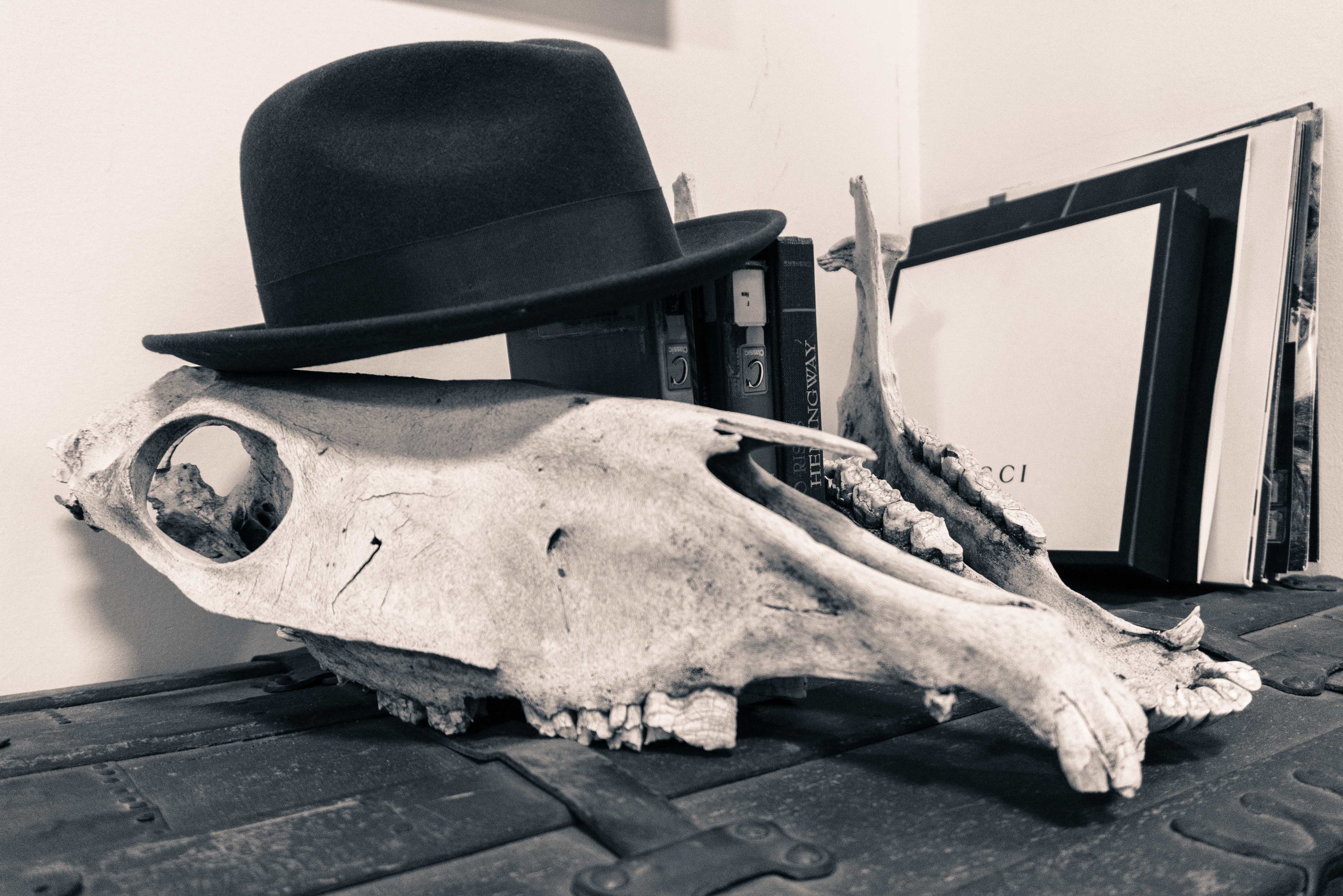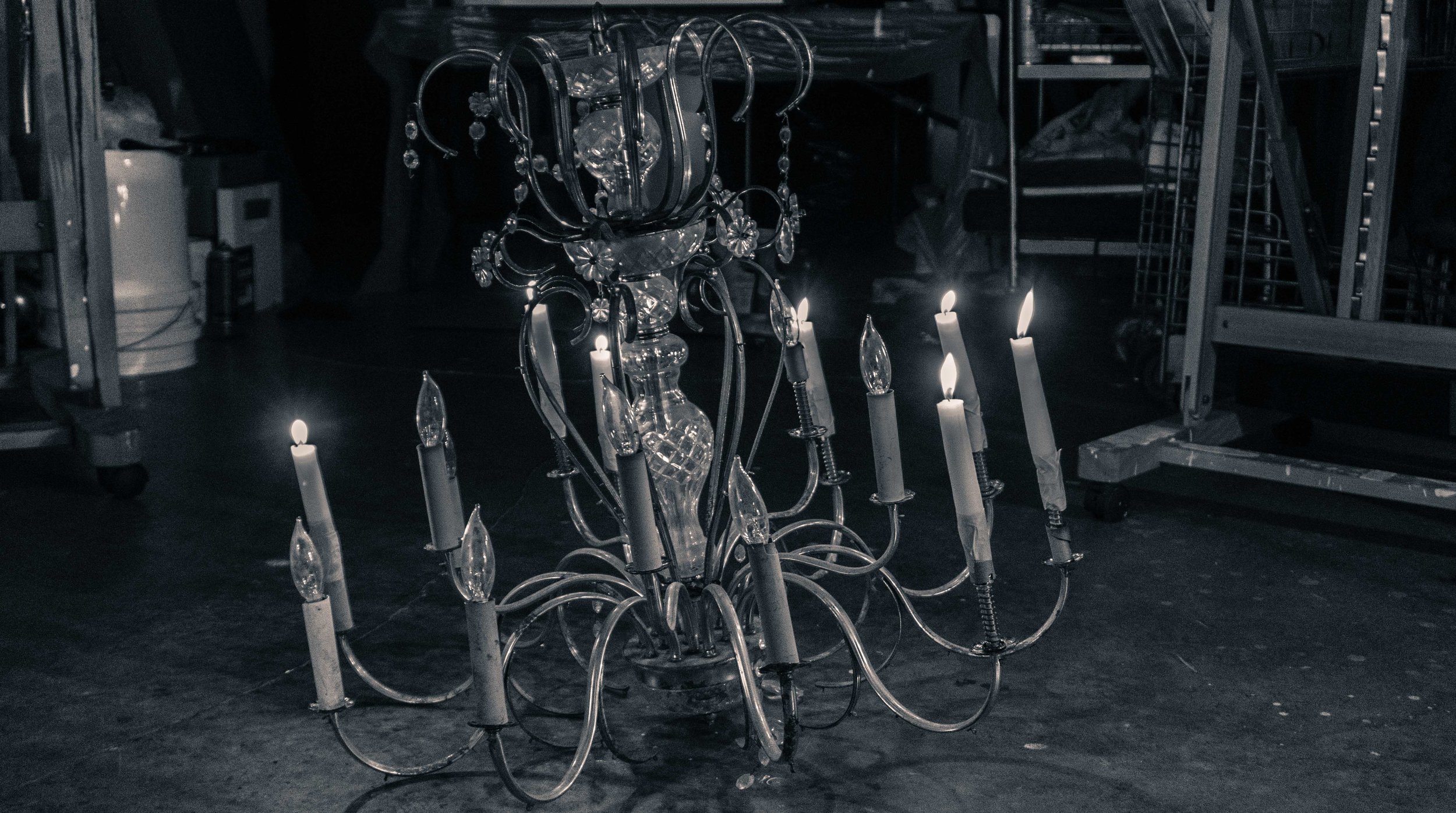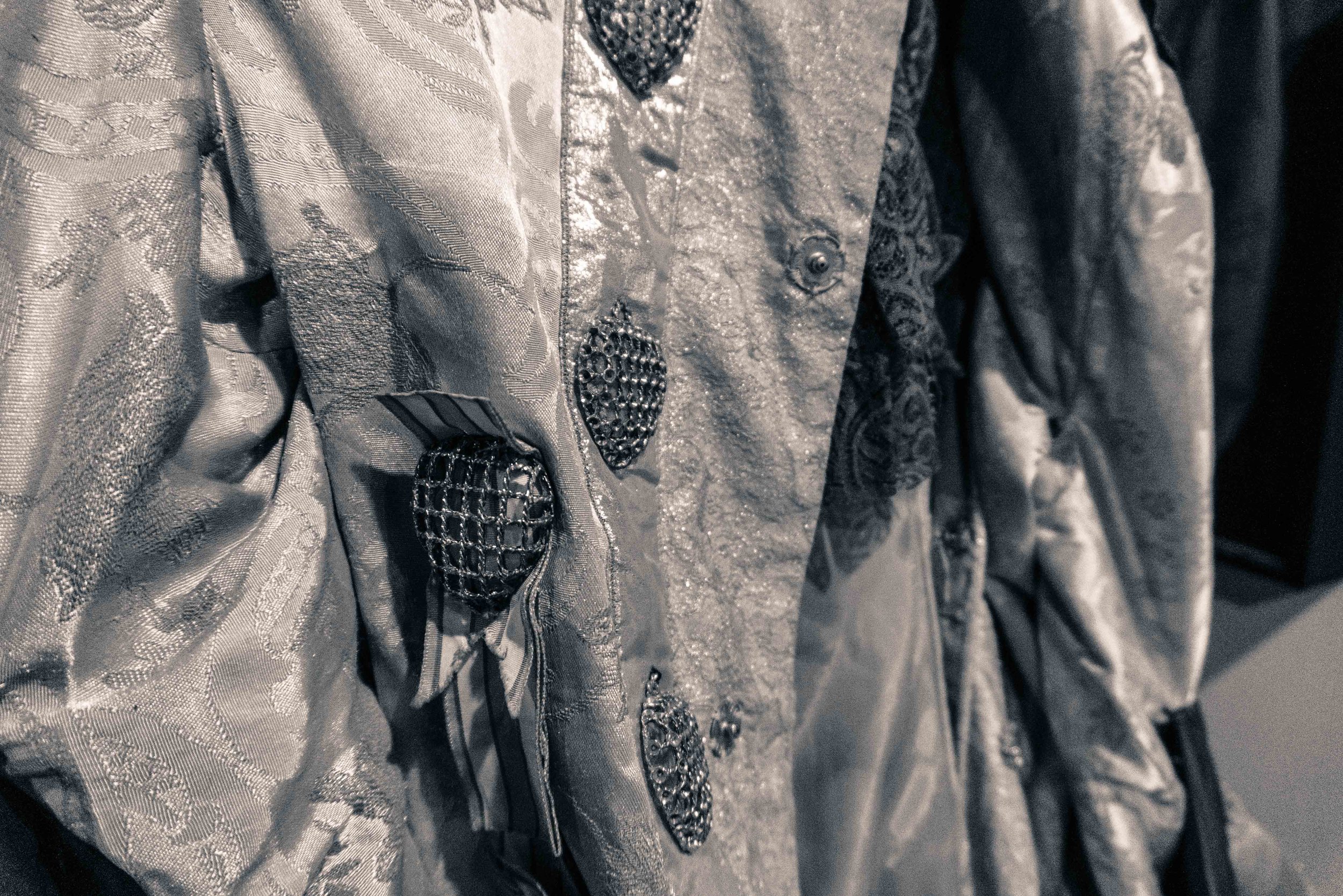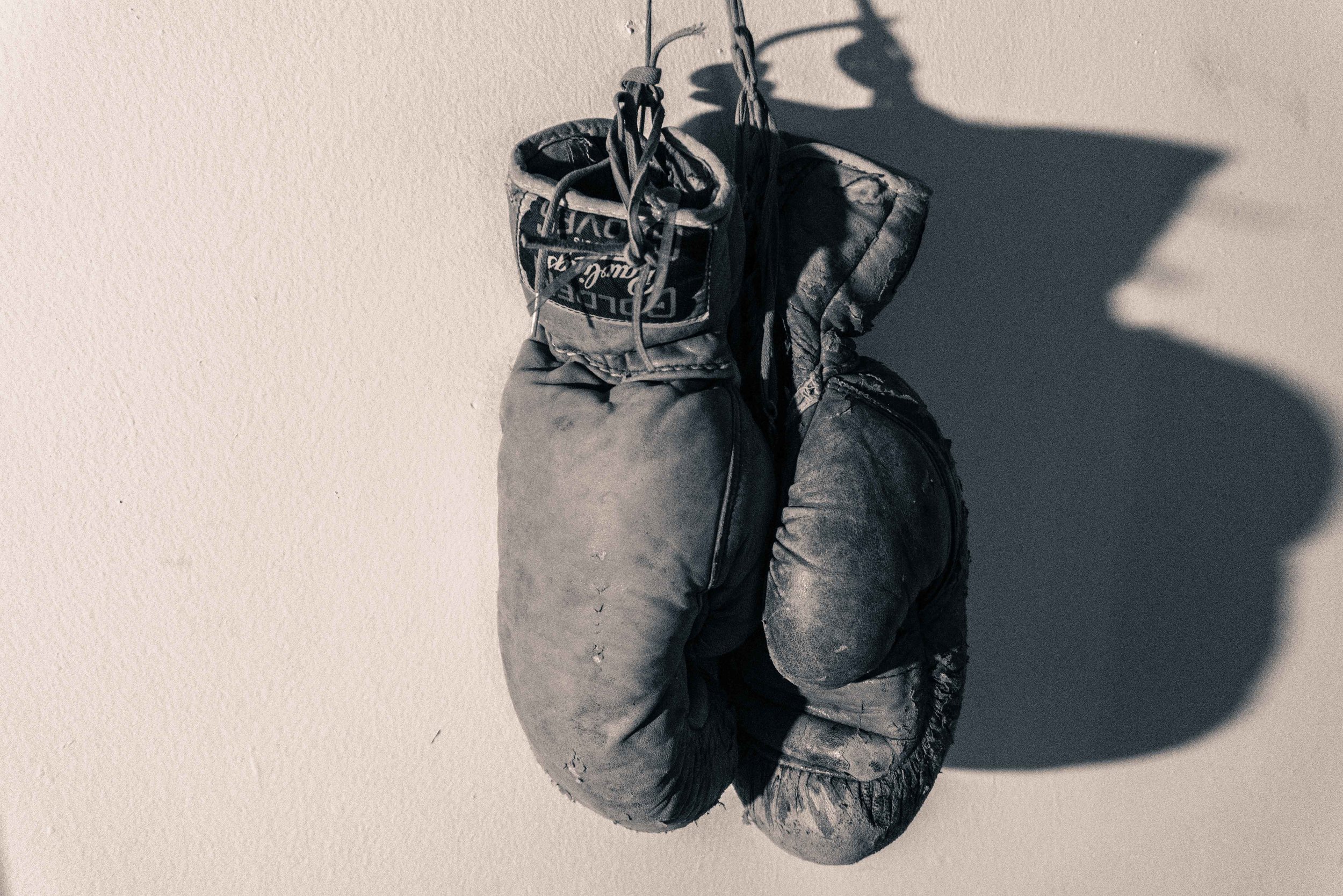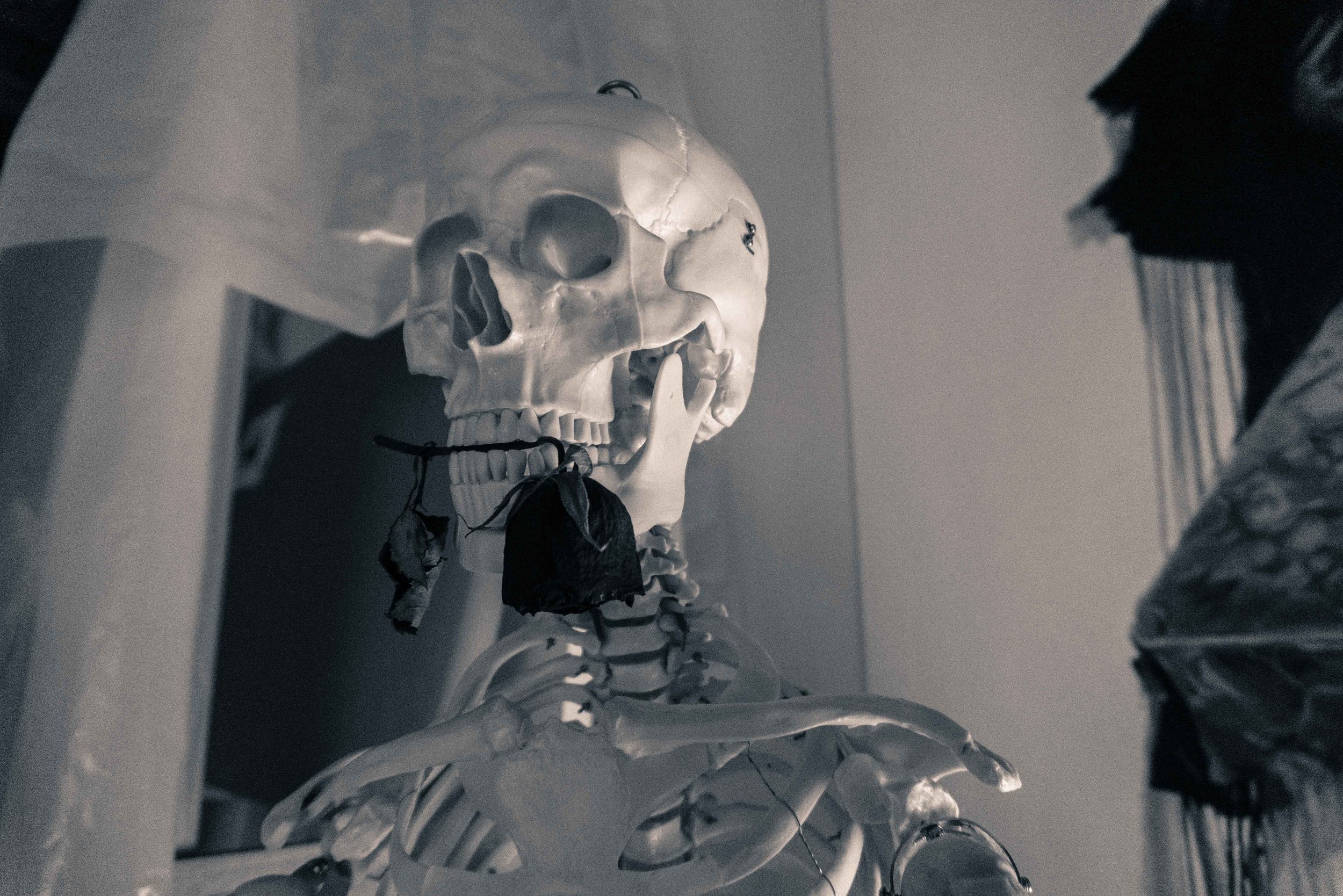in the studio | drew merritt
Discarded fortunes from Panda Express litter a coffee table cluttered in art books, crumpled Coke cans and a gothic chandelier. A giant canvas of a modern crucifixion overlooks an inherited Victorian couch from Cyrcle, a future relic used by artists whose work will survive long enough to influence subsequent generations. It’s an appealing studio hidden in the bricks of Culver City, one with high ceilings and wood beams that would drive any noose zealot wild. Outside, prostitutes await their next clients.
“The agent sold this to me as part of an up-and-coming-arts district. After I moved in, I went to the local liquor store. The cashier told me, ‘ten years ago, they would have killed you.’”
Drew Merritt sits across from us in an office chair, his khakis covered in dark splotches of paint. He’s about to take reference photos of model Sarah McDaniel for his upcoming show, Slaying Idols, at Thinkspace in May. Their collaboration wasn’t planned. Earlier that day, the hands of fate flicked the cards in such a way that Sarah and I now found ourselves in his studio, deep in conversation.
A painting of brown boxing gloves is drying on an easel, the physical counterpart hanging from a nail in the wall. Next to it is a life-size portrait of a black horse and a naked girl, seen from behind. She’s on her stomach, slumped over the back of the horse.
“How would you describe your art?” Sarah asks.
“As soon as I can describe it in terms then I’m not pushing forward enough.”
“How philosophical,” Sarah responds.
When I ask if he mainly paints girls, he says that he didn't as much in his earlier work, but that all changed when his murals of women began garnering public attention. It was then that he decided he’d paint them, but on his own terms.
“I don’t want to be known as the pretty girl painter,” he says, leaning forward. “I just painted a dead girl downtown. No one notices she’s dead because she’s beautiful. That’s my way of messing with people.”
There’s a second of silence before a Ray Charles song spills from the speakers.
“Sorry…I usually have a concept prepared, but this was pretty last minute. Let’s see what we can work with,” he says.
We follow him into a kitchenette stacked with Red Bull boxes, leftovers from a recent commission. He keeps a pile of rented costumes (originally designed for Cher), just beyond them, hidden beneath the stairs. He holds each option up for review.
“This is it,” Sarah says, snatching a pink, blue and gold paisley jacket with billowing sleeves.
The staging is minimal: a light, a stool, a camera and Sarah in cosplay. Most of Merritt’s concepts incorporate the use of costumes. His works look like Renaissance oil paintings, but imbued with modern elements and brazen imagery.
“Is it possible to incorporate an object that defines me?” Sarah asks.
“What would that be?”
“A giant void.”
“I have just the thing.”
He wheels out an antique chest from the corner of the room. It’s empty inside. He places a lightbulb inside and closes the lid. It becomes the only light source in the room. Sarah kneels on the floor, cracks the top and peers in, reminiscent of Pandora.
Merritt is ready. Ray Charles meshes with camera shutter clicks, the soundtrack to an electric exchange between artist, model, and object, striving to conjoin for the sake of creation.
“This is going to have to be a big painting, because it’s dope, boo,” he says after awhile.
“Perfect. I’m exhausted,” she responds.
I imagine it must be draining to unleash the evils of the universe even via method modeling.
The hourglass for his second world is running out. He asks her to close the chest and brings out a wooden wheelchair for the final set. I can’t fathom what the wheelchair represents. All I can think of is Lieutenant Dan Taylor in Forrest Gump.
As they finish up, I notice a massive animal skull by the couch. No matter how hard I try, I can’t stop staring. I’ve never seen anything like it.
“Who is this?” I ask.
“That was my family’s horse, Mo. I’ve got more upstairs.”
About a dozen skulls from elk, deer and oryx adorn a wall on the second floor, each of which has been hunted by Merritt, who has put to use every inch of them from their meat, to their hide, to their bones.
“I grew up on a farm in New Mexico. It’s… much different from LA,” he says.
“How long have you lived here?”
“Three years. I want to get out, but everything’s here.”
As an artist, it seems that everything really is here—and he’s seized the opportunities in a very short time frame. His work has been shown in galleries in New York, Detroit, London and Seattle. He has painted murals in places like Miami, Portland, Atlanta and even Israel.
He walks us out. The coast is clear. There is nothing beyond the door but someone’s makeshift bed made up of crumpled cardboard. Nearby, a piece of half-eaten jerky has been cast aside. The area may have missed the mark as an art mecca, but it did help Merritt transition from being an up-and-coming artist to an established one.
Before we depart, he apologizes again. He prefers to bring his A-game, where concepts abound and there’s ample time to hatch a plan. Yet sometimes it’s more intriguing to see what might arise on a whim, what can come from nothing but a split-second decision, commitment to the moment, and a fertile imagination.
words by carter

